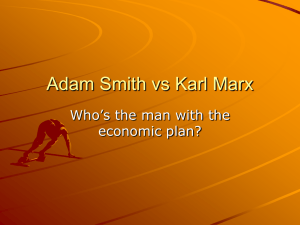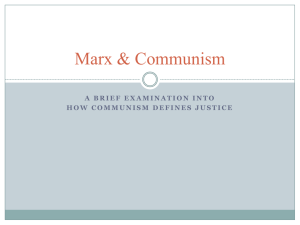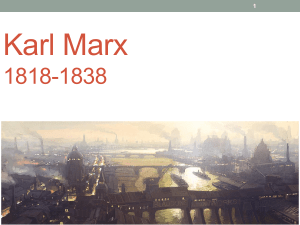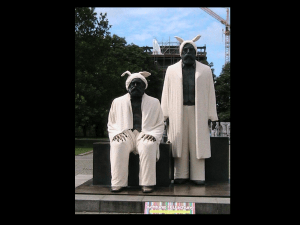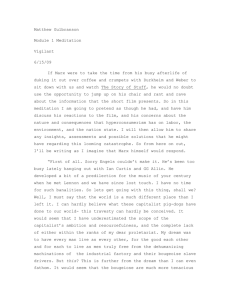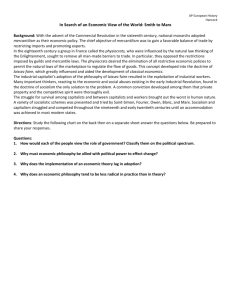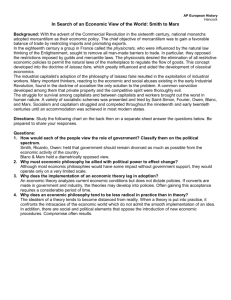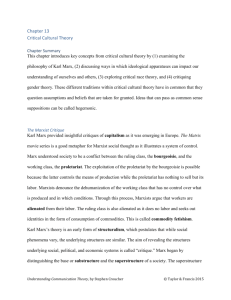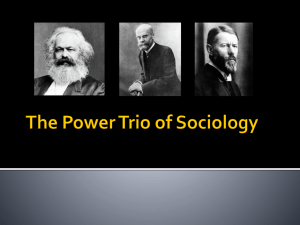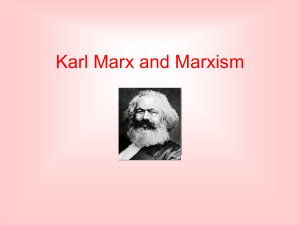Karl Marx` Communist Theory
advertisement
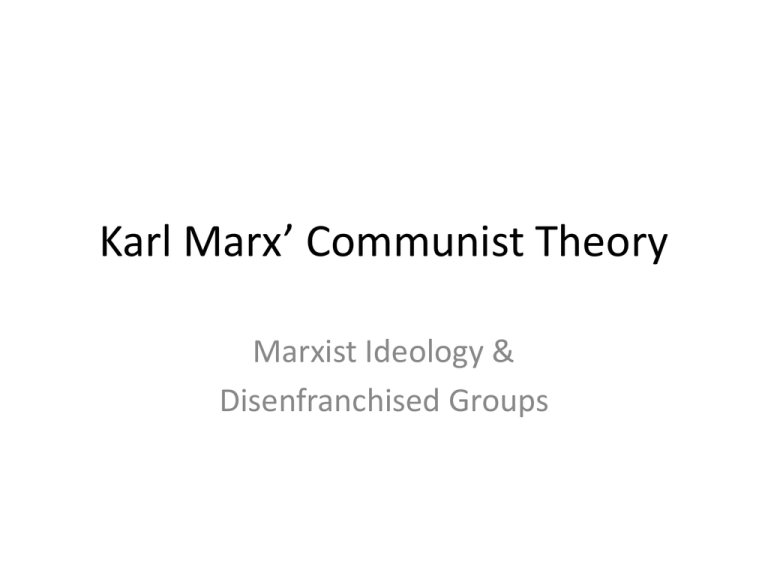
Karl Marx’ Communist Theory Marxist Ideology & Disenfranchised Groups Karl Marx (1818 – 1883) Marx & The Good Society • Marx believed that progress could be achieved and society transformed through the application of human knowledge. • Central to his concepts was the idea that humans could never be free if society was not built in a way that allowed for this. • To this end, Marx had issues with class-based Capitalistic methods of wealth production. Production of Wealth • For Marx, wealth is defined as the total of material goods that a society generates. • In Capitalism, the production of wealth always takes place by means of the exploitation of the majority, non-property owning class by the minority, who own the means of production and do not work. • In America, we can loosely consider these two classes to be workers and corporations, respectively. The Proletariat & The Bourgeoisie • Marx called the lower, laboring classes “the Proletariat.” Property owning employers were called “the Bourgeoisie.” • The Proletariat generates wealth for the Bourgeoisie by selling the only thing they have to sell: their labor. In order for their labor to be worth anything, it must always be cheaper than the value of what they produce. • This is how wealth is generated in Capitalism. Infrastructure & Superstucture • Marx believed that the primary basis of reality – the story we tell that defines how we think about ourselves and the world – stems from all economic activity, all generation of wealth. He called this the Infrastructure. • All other structures in society: education, the family, even art, are based upon this primary narrative. He called these the superstructure. Superstructures • Marx felt that superstructures didn’t only rest upon the economic system, they supported them as well. • Family supports labor power by providing safety for the rearing of children and a relaxing environment to rest in order to return to work the next day. • Education creates adherence to following orders, being given small bits of information, not an understanding of the whole picture, and learning to get good grades rather than learning for the sake of it. This easily translates to the idea of working on only a portion of production, and working for money rather than for your Self. Superstructural Ideologies • Most importantly, though, Marx was concerned with how ideas coerce workers into acquiescence with the dominant order. • By creating a system of law that supports the empowered and negates the disenfranchised, and by blinding the population to the externalities inherent in any capitalistic system, the proletariat take part in their own exploitation willingly. Consumerism As Dominant Superstructural Ideology • In today’s Western society, Marxism would point to consumerism as the most important dominating ideology. • By convincing workers that happiness is a result of buying products, the dominant class creates participation in the idea of work for money. Marxism includes a critique of the Entertainment and News industries also, as they divert attention from true meaning. False Consciousness vs. Class Consciousness • Marx described this confused interpretation of meaning as a “false consciousness.” • He suggested that, when a class-based mode of production falters – when poverty and disenfranchisement become noticeable – will workers adopt the true understanding of themselves as exploited, and develop “class consciousness.” Class Consciousness & Social Change • Marx was convinced that once “class consciousness” was developed, the proletariat would rise up to eliminate their state of subservience to the dominant class and embrace Communism as a political system. • This would include no ruling class, selfgovernment by workers who work for themselves, and the freedom to make one’s own destiny within a liberating group context.


